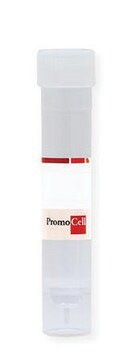C1016
Calcium chloride
anhydrous, granular, ≤7.0 mm, ≥93.0%
Se connecterpour consulter vos tarifs contractuels et ceux de votre entreprise/organisme
About This Item
Formule linéaire :
CaCl2
Numéro CAS:
Poids moléculaire :
110.98
Numéro CE :
Numéro MDL:
Code UNSPSC :
12352300
ID de substance PubChem :
Nomenclature NACRES :
NA.55
Produits recommandés
Qualité
anhydrous
Pression de vapeur
0.01 mmHg ( 20 °C)
Essai
≥93.0%
Forme
granular
Taille des particules
≤7.0 mm
Pf
772 °C (lit.)
Température de stockage
room temp
Chaîne SMILES
[Cl-].[Cl-].[Ca++]
InChI
1S/Ca.2ClH/h;2*1H/q+2;;/p-2
Clé InChI
UXVMQQNJUSDDNG-UHFFFAOYSA-L
Vous recherchez des produits similaires ? Visite Guide de comparaison des produits
Catégories apparentées
Application
Calcium chloride was used during the isolation of total β-glucan from hydrolyzed barley powders. It was also used as a cross-linker during the preparation of Aloe vera pectin gels.
It may be used in the following processes:
It may be used in the following processes:
- Modification of natural zeolite to increase its ability of fluoride removal.
- Synthesis of calcium sulfate whiskers utilized in making polymer reinforcing composite materials.
- Synthesis of calcium chloride-anodized aluminum composites, a solid sorbent.
- As an extractant in the soil analysis process.
- As a catalyst in the synthesis of aldols by reacting dimethylsilyl (DMS) enolates with aldehydes.
Attention
may contain powder and some dark grey granules
Mention d'avertissement
Warning
Mentions de danger
Conseils de prudence
Classification des risques
Eye Irrit. 2
Code de la classe de stockage
13 - Non Combustible Solids
Classe de danger pour l'eau (WGK)
WGK 1
Point d'éclair (°F)
Not applicable
Point d'éclair (°C)
Not applicable
Faites votre choix parmi les versions les plus récentes :
Déjà en possession de ce produit ?
Retrouvez la documentation relative aux produits que vous avez récemment achetés dans la Bibliothèque de documents.
Les clients ont également consulté
Hao Li et al.
Nano letters, 19(8), 5194-5204 (2019-07-02)
A globally imminent shortage of freshwater has been demanding viable strategies for improving desalination efficiencies with the adoption of cost- and energy-efficient membrane materials. The recently explored 2D transition metal dichalcogenides (2D TMDs) of near atomic thickness have been envisioned
Stephanie M Dillon et al.
Bio-protocol, 10(2), e3486-e3486 (2020-01-20)
Gut CD4 T cells are major targets of HIV-1 and are massively depleted early during infection. To better understand the mechanisms governing HIV-1-mediated CD4 T cell death, we developed the physiologically-relevant Lamina Propria Aggregate Culture (LPAC) model. The LPAC model
Ángel Serrano-Aroca et al.
PloS one, 12(9), e0185235-e0185235 (2017-09-22)
Micrometer length tubes of graphene oxide (GO) with irregular form were synthesised following facile and green metal complexation reactions. These materials were obtained by crosslinking of GO with calcium, zinc or strontium chlorides at three different temperatures (24, 34 and
Federico Lopez-Hernandez et al.
The Plant cell, 32(10), 3346-3369 (2020-08-10)
Arabinogalactan proteins (AGPs) are a family of plant extracellular proteoglycans involved in many physiological events. AGPs are often anchored to the extracellular side of the plasma membrane and are highly glycosylated with arabinogalactan (AG) polysaccharides, but the molecular function of
Sang Hoon Lee et al.
Preventive nutrition and food science, 20(2), 110-118 (2015-07-16)
This study was performed to investigate changes in the content and purity, as well as physical characteristics of β-glucan extracted from acid hydrolyzed whole grain barleys. Waxy and non-waxy barleys (Hordeum vulgare) were hydrolyzed with different concentrations of HCl (0.1~0.5
Notre équipe de scientifiques dispose d'une expérience dans tous les secteurs de la recherche, notamment en sciences de la vie, science des matériaux, synthèse chimique, chromatographie, analyse et dans de nombreux autres domaines..
Contacter notre Service technique






